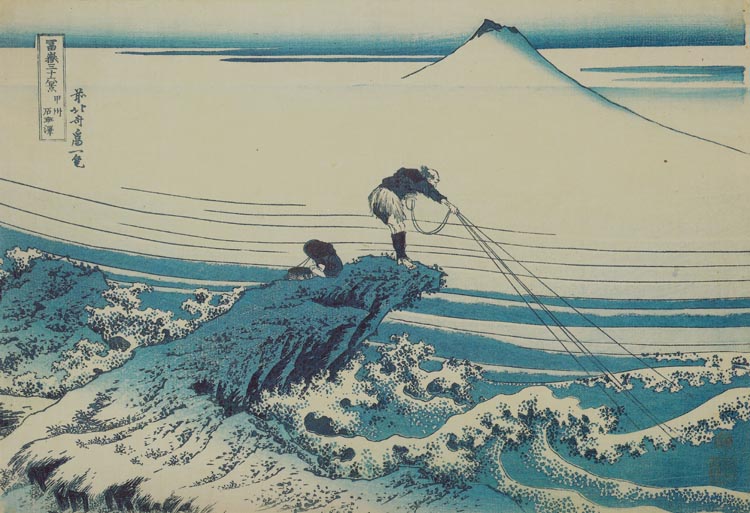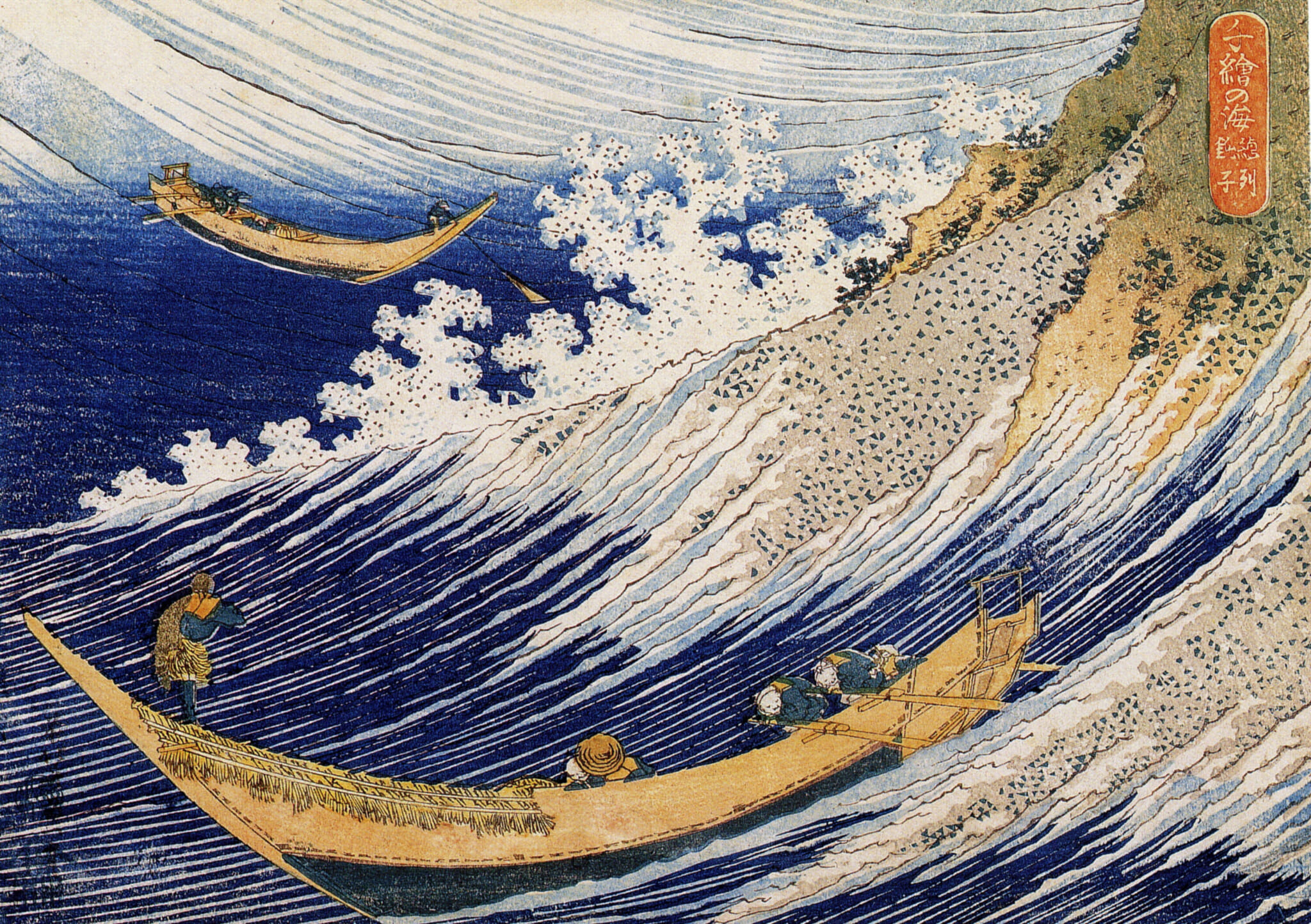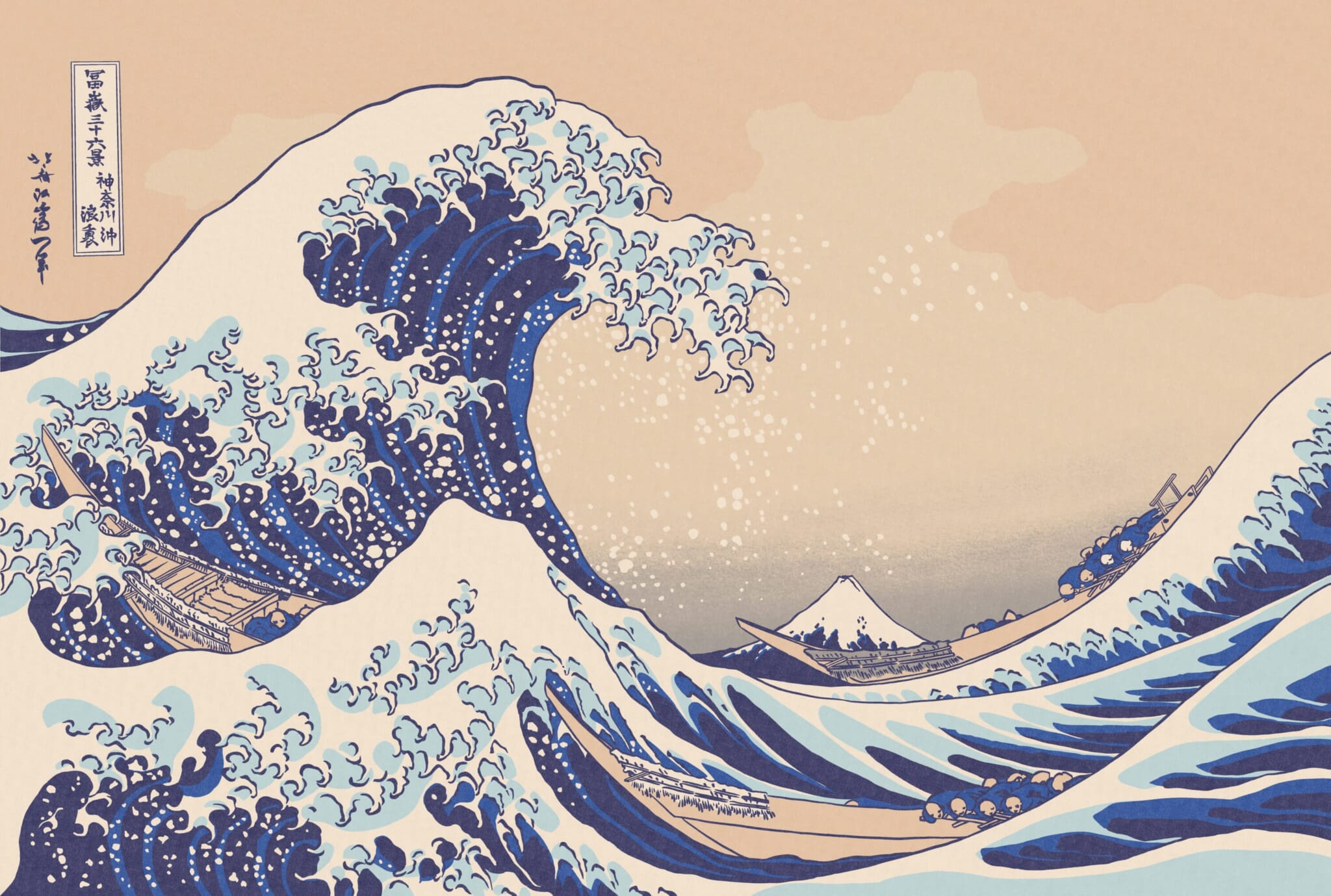Katsushika Hokusai was a Japanese artist, ukiyo-e painter and printmaker in the Edo period (1603-1867). You probably know Hokusai from his monumental “The Great Wave off Kanagawa” in his “Thirty-six Views of Mount Fuji.” But how much do you know about his life?
Here is a compiled list of 13 facts about Hokusai for fans of Japanese art and trivia, or anybody with a curiosity about the artist behind one of Japan’s most famous works.
Goten-Yama Hill, Shinagawa on the Tokaido by Katsushika Hokusai (1760-1849). | Source: Wiki Media Commons
1. Hokusai was expelled from Katsukawa Shunsho’s school
Hokusai trained under leading ukiyo-e master Katsukawa Shunsho. Even after Katsukawa’s passing, the artist remained at Katsukawa’s school, which was run by his top pupil, Shunko. Around the same time, Hokusai started incorporating Dutch and French carving styles from Western artworks that were smuggled illegally as Japan had its closed-door policy. Through this, the artist was able to transform the ukiyo-e art style into something new. When Shunko realized what was going on, Hokusai was expelled from the school.
Hokusai later reflected on this and believed that being humiliated by Shunko was actually a blessing in disguise, as he was able to explore his own artistic style and take it to new heights.
2. Hokusai had at least 30 different pen names
In Hokusai’s time, it was not uncommon for Japanese artists to switch and change pen or artist names multiple times. Hokusai utilized various names: Shunro Katsukawa (which he received from his master Katsukawa), Sori, Kako, Taito, Gakyujin, Iitsu, Manji and Gakyoryojinmanji, which meant “the old man mad about art.”
The names were used to differentiate Hokusai’s different styles and periods.
3. Hokusai was the first artist to use the term manga
In 1814, when Hokusai was in his 50s, he published the first volume of Hokusai Manga, a collection of detailed pictures of animals and various objects. The publication was intended for aspiring artists to copy and learn how to draw and paint. It quickly became a bestseller.
4. Hokusai reached the peak of his career at 60
It wasn’t until Hokusai reached the age of 60 that he produced his most revered and well-known pieces. The artist was, until then, creating various woodblock prints featuring waterfalls, bridges, birds and flowers.
5. Hokusai created over 30,000 artworks
Art historians believe Hokusai threw everything into his art and worked from early morning until late at night. Over the course of his life, he produced over 30,000 artworks in a wide variety of media, including single-sheet prints, surimono, picture books, illustrations, verse anthologies, historical novels, erotic books and album prints.

“Kajikazawa in Kai Province” (1831) by Katsushika Hokusai | Source: Wiki Media Commons
6. Hokusai belonged to the Nichiren School of Buddhism
Nichiren scriptures associate Mount Fuji with eternal life. Legend has it that the secret to eternal life was placed at the summit of Japan’s tallest mountain. Hokusai was a follower of the Nichiren school of thought and adopted these beliefs into his own philosophy. Many believe his depictions of Mount Fuji showed his penchant for religious symbolism.
7. Hokusai’s youngest daughter was also an artist
Oi, Hokusai’s youngest daughter and favorite child, was also the artist’s favorite pupil. After the end of her unhappy marriage, Oi returned home, where she stayed with Hokusai until his death. Oi’s life is celebrated in Miss Hokusai, a manga series that ran in the 1980s. There was also an animated feature film released in 2015.
8. The Great Wave off Kanagawa is the world’s first viral image
Hokusai’s most internationally well-known piece, “The Great Wave off Kanagawa,” is considered one of the world’s first viral images. Arguably, it is the most recognizable piece of Japanese art in the world. Plus, we simply can’t get over the fact it inspired the water wave emoji.
9. Hokusai originally planned to be a mirror polisher, not an artist
It was said that his father was a prestigious mirror polisher for the high class and that Hokusai was studying to succeed in the family business. However, his artistic talents and ambitions led him down a different path.

“Choshi in Shimosha” (1833) by Katsushika Hokusai | Source: Wiki Media Commons
10. Hokusai moved 93 times throughout his life
Hokusai hated cleaning, so he let dirt and dust pile up in his studio until he could not live there anymore and moved on to his next residence.
11. One of Hokusai’s most famous works was also his largest
During a festival in 1804, Hokusai used buckets of ink to paint an enormous portrait of the semi-mythical monk Bodhidharma (Daruma in Japanese), said to be the founder of Zen Buddhism, on a 180-meter-long scroll.
12. Hokusai was poor until his death
Hokusai did not care if he starved as long as he was able to paint. It’s believed that he would use broken pieces of sake bottles as paint palettes and the very bottom part of the bottle as a brush cleaner.
13. A fire destroyed much of Hokusai’s work
In 1839, Hokusai’s studio burned down in a neighborhood fire. Along with his daughter, he just about managed to escape through a window, with only their paintbrushes in hand. Art historians believe thousands of works were lost in the fire and never recovered.









